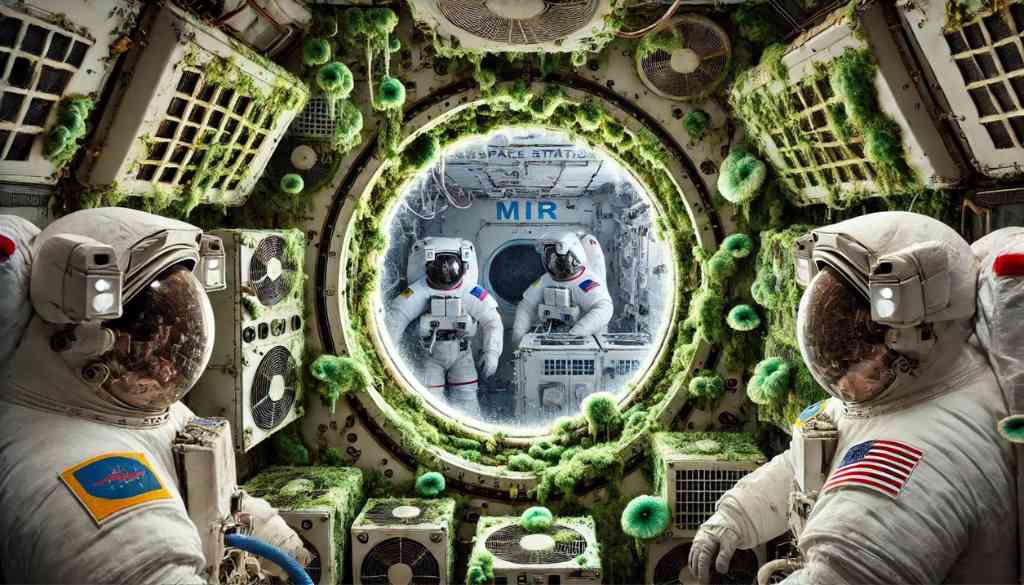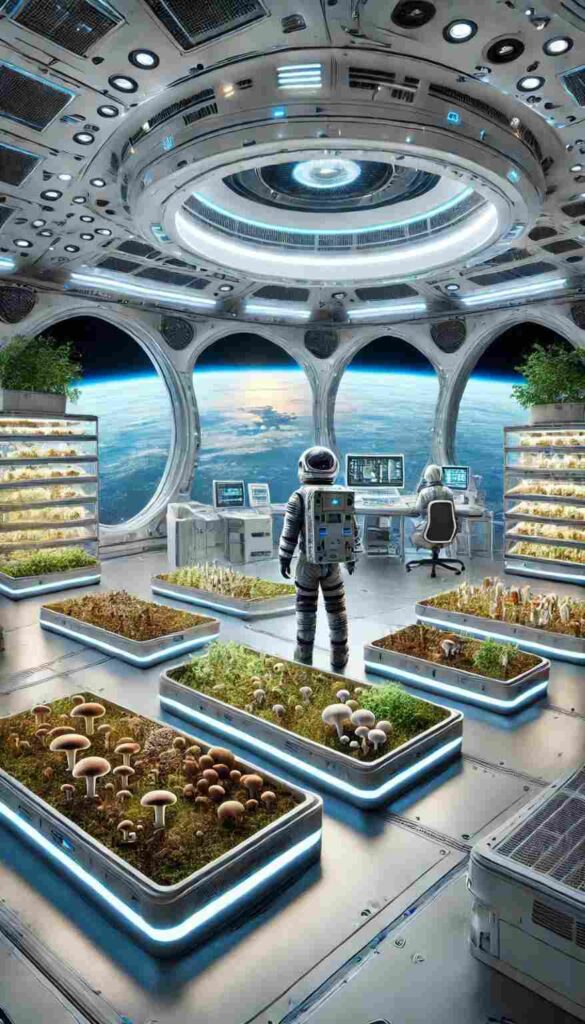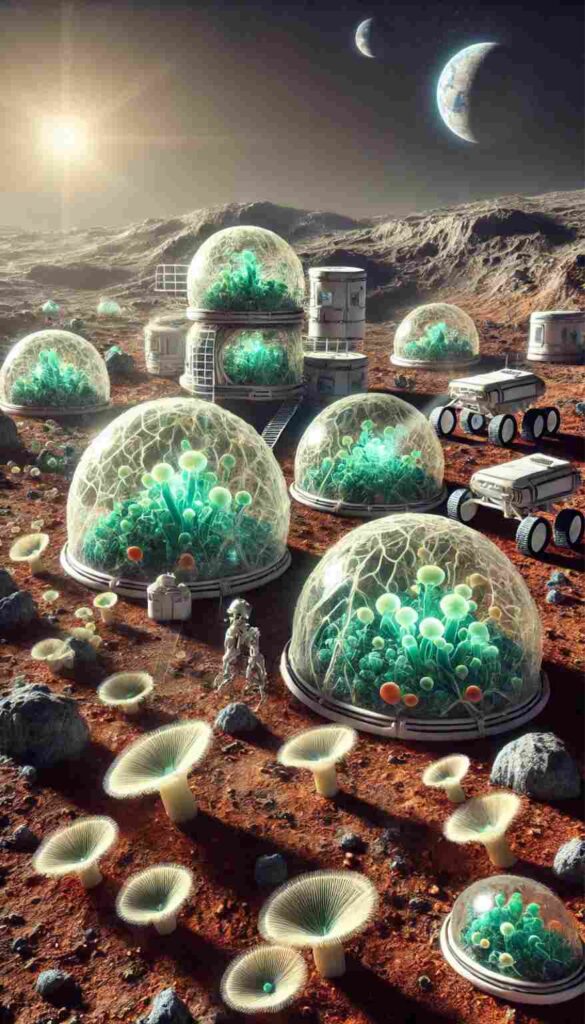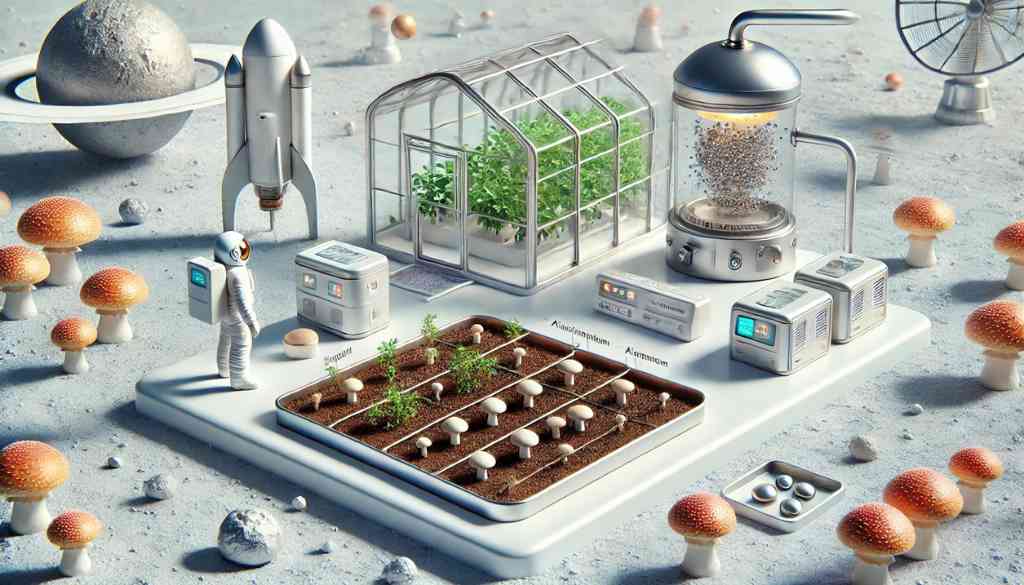Mushrooms: The Unsung Heroes of Space & Skincare
Written by: Erik Lang, Love Mushrooms Co-Founder
Date: 2024-07-29

How Fungi Could Pave the Way for Extraterrestrial Colonisation and Enhance Your Skin

When astronauts aboard the Soviet space station Mir found their clear portholes clouded with a green and black web-like substance, they discovered a surprising and potentially dangerous stowaway: fungi. These Earth-derived organisms had not only survived the journey to space but thrived in the harsh conditions, blanketing air conditioners and corroding control panels. While initially alarming, this discovery has led scientists to realise that fungi’s unique resilience may hold the key to our future in space—and they might also hold secrets beneficial for our skincare routines here on Earth.
Resilience in Harsh Environments
Fungi’s ability to survive—and even thrive—in space can be attributed to several remarkable characteristics. One of the most significant is their production of a unique form of melanin. This pigment safely absorbs high levels of cosmic radiation, which is abundant in space, and in some cases, converts this radiation into energy for growth. This ability makes fungi exceptionally resilient to the DNA-damaging effects of cosmic radiation, which pose a serious threat to most other forms of life.
Furthermore, fungi possess robust DNA repair mechanisms. Even if radiation manages to damage their genetic material, fungi can cut out and repair the defective sequences, maintaining their integrity and functionality. This resilience is complemented by their hardy spores, which have thick cell walls that protect them from extreme temperatures and other environmental stresses.

Building the Future with Fungi
One of the biggest challenges of space colonization is constructing habitats on other planets. Traditional methods involve either sending supplies from Earth, which is prohibitively expensive, or using local materials like regolith—the loose dust and fragmented rock on planetary surfaces—which requires heavy, energy-intensive machinery. Here, fungi offer an innovative solution.
Fungi have hair-like root structures called mycelia, which can bind to and grow through various materials, creating a dense and durable network. This property can be harnessed to construct habitats on other planets. NASA’s Innovative Advanced Concepts program has proposed using lightweight, flexible bags seeded with dehydrated fungal spores. Once on their new planetary home, these bags would be rehydrated with water sourced by accompanying rovers and filled with regolith or a lightweight binding material like dehydrated wood chips.
In these habitats, cyanobacteria would play a crucial role by providing nutrients to the fungi and converting sunlight into oxygen, supporting both fungal growth and human respiration. The mycelia would grow to form the walls, roof, and even furniture of these structures. Maintenance would be straightforward: any cracks or damage could be easily reseeded and regrown, and engineered cyanobacteria could alert residents to any issues by glowing when oxygen or pressure levels drop.
Beyond Housing: Fungi’s Multifaceted Role in Space
Housing is just the beginning of fungi’s potential uses in space. Sustainable food production is another critical aspect of space colonization, and soil suitable for traditional agriculture is scarce off Earth. Fungi could help by releasing enzymes that break down carbon-rich asteroids into soil, providing a viable medium for growing food.
Moreover, fungi could be engineered to extract valuable metals from local resources. By mining and processing metals like aluminum and iron, space colonies could source necessary materials locally, reducing reliance on supplies from Earth and making colonies more self-sufficient.

Fungi’s Role in Skincare
The remarkable properties of fungi extend beyond space travel and into the realm of skincare. The melanin produced by fungi, which protects against radiation in space, also offers protective benefits for our skin. Fungi like Chaga and Shiitake are particularly noteworthy in this regard.
Chaga mushrooms are rich in antioxidants, which help combat oxidative stress and reduce inflammation, key factors in maintaining healthy skin. Chaga also contains betulinic acid, which can support skin elasticity and reduce the appearance of fine lines and wrinkles.
Shiitake mushrooms, on the other hand, are a powerhouse of vitamins and minerals. They contain kojic acid, a natural compound known for its skin-lightening properties, which can help reduce the appearance of dark spots and even out skin tone. Additionally, Shiitake mushrooms are rich in polysaccharides, which help maintain the skin’s moisture barrier, keeping it hydrated and supple.
From their initial role as a hazard aboard Mir, fungi have shown immense potential in supporting human life beyond Earth. Their unique characteristics—resilience to radiation, robust DNA repair, and the ability to bind and transform materials—make them ideal candidates for constructing habitats and supporting sustainable living in space. Here on Earth, the same properties that make fungi resilient in space can enhance our skincare routines, offering protection, hydration, and anti-aging benefits. As researchers continue to explore and develop these technologies, fungi may prove to be the unsung heroes of space travel and skincare, breaking the mold and paving the way for humanity’s next great adventure.

https://www.womanandhomemagazine.co.za/beauty/the-benefits-of-mushrooms-in-skincare/